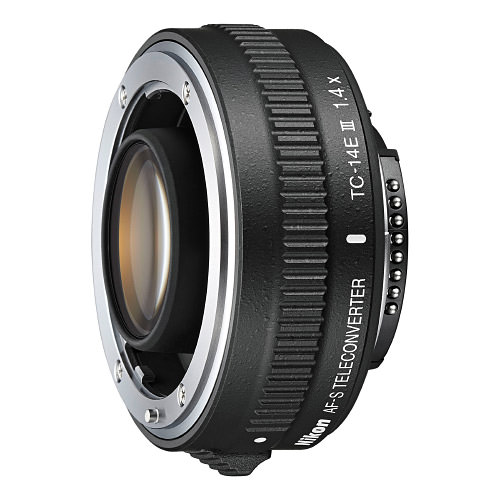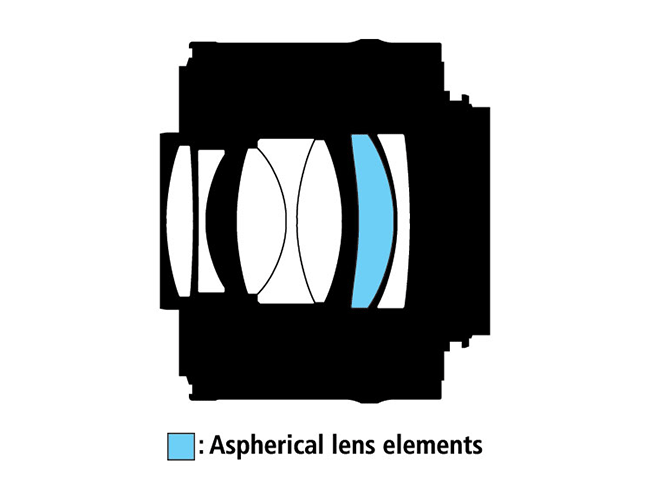When using telephoto and macro lenses, it is often desirable to get tighter framing on a subject that is being photographed. There can be many reasons for wanting to make subjects appear larger in images, but the main reasons are typically related to enhancing composition, improving subject detail and increasing image resolution (particularly after extensive cropping). For example, photographing a bird with a short focal length lens from hundreds of feet away will result in the bird appearing very small and insignificant, with very little to no detail in the resulting image. But if the same bird is photographed at a closer distance or with a longer focal length telephoto lens, a lot more detail can be revealed about the bird. In addition, making the bird take a larger portion of the image can also enhance the image by reducing the amount of clutter surrounding the bird, allowing for a better overall composition. When conditions allow, it is possible to achieve tighter framing by simply walking closer to the subject or zooming in with a zoom lens. However, what if getting closer is not an option and one is already at the longest focal length of their lens? In such situations, a teleconverter can come into rescue. Teleconverters allow increasing the focal length of lenses by coupling with them and thus essentially magnifying the image, allowing for tighter framing of subjects. While teleconverters can be incredibly useful, they also have a few rather serious disadvantages that can lead to increased blur and loss of sharpness. Let’s take a look at what a teleconverter is and go over its advantages and disadvantages in more detail.

First, we will define what a teleconverter is and how it can be used in photography.
1) What is a Teleconverter?
A teleconverter, also known as an “extender”, is a magnifying secondary lens that is typically attached between a camera body and an existing (primary) compatible lens. The purpose of a teleconverter is to increase the effective focal length of the primary lens, which unfortunately comes at the cost of decreased sharpness and reduced maximum aperture. The magnification effect of a teleconverter and its effect on maximum aperture depends on its multiplication factor, which varies from 1.2x all the way to 3.0x (the most common teleconverters are typically 1.4x and 2.0x). For example, if one uses a 300mm f/2.8 prime telephoto lens, a 2.0x teleconverter will double its focal length and decrease its maximum aperture by two full stops, which will make it a 600mm f/5.6 lens. Teleconverters also have the same effect on zoom lenses – both sides of the zoom range will get magnified and their maximum aperture decreased. For example, a 1.4x teleconverter would make a 70-200mm f/2.8 into a 98-280mm f/4.0 lens.
Optically, a teleconverter is typically comprised of multiple optical elements, the total number of which can vary depending on the optical design and focal length multiplication factor of the teleconverter. Typically, the larger the multiplication factor / the longer the teleconverter, the larger the physical size of the teleconverter. Since most teleconverters are designed to be used with a number of different lenses, their optical design normally incorporates standard lens elements without optical corrections, which unfortunately results in increased optical aberrations, such as lateral chromatic aberration. However, in some rare cases, manufacturers do try to minimize the effect of optical aberrations by incorporating more complex lens elements, such as aspherical elements, into their teleconverter design.

Complex 7 element 5 group design of the Nikon TC-20E III teleconverter that incorporates a single aspherical lens element
The use of extra-low dispersion lens elements is also rather limited in teleconverters, partly due to potential incompatibility issues with all attached lenses. There are exceptions to this too though – sometimes manufacturers make teleconverters specifically for one lens and in such cases they can incorporate any suitable optical lens elements as part of telephoto group of lenses. One such known case is the NIKKOR AF-S TC800-1.25E ED, which was not only made for the exotic Nikon 800mm f/5.6E FL ED VR, but also each manufactured teleconverter was tuned to specifically work only with the 800mm lens it was shipped with. Because of this, the TC800-1.25E ED teleconverter cannot be purchased separately, like all other normal teleconverters.
As a result, keep in mind that standard teleconverters designed to work with more than one lens are always going to be built with some compromises.
2) Common Teleconverters
Although practically every lens manufacturer involved in making super telephoto lenses also makes teleconverters, the most common teleconverters you will find on the market are typically limited to those with 1.4x and 2.0x multiplication factors. Some manufacturers, however, also produce more uncommon teleconverters with other multiplication factors, but their use and effectiveness can vary greatly by lens. For example, Nikon and Hasselblad make 1.7x teleconverters, while accessory manufacturers like Kinko can make teleconverters with much longer reach at 3.0x multiplication factor. Unfortunately, as explained below, teleconverters have rather drastic effects on lens performance both in terms of overall sharpness and autofocus speed, so one has to be very careful when choosing anything longer than 1.4x. In some cases, it might be better to crop an image in post to get closer to the subject, than to try to do the same with a teleconverter (this can be especially true when attempting to stack multiple teleconverters).
3) Teleconverter Lens Compatibility
As mentioned above, while teleconverters are typically made to work with more than one lens, there are no teleconverters on the market that work with every lens. Both Nikon and Canon have rather small lists of lenses (compared to the overall lens line) that are compatible with their teleconverters for a reason – most lenses are not designed to couple with teleconverters. Some have physical limitations, such as a rear element extending too close to the camera mount, while others have optical limitations. Since most teleconverters are specifically designed for professional super telephoto lenses, most wide angle, standard and telephoto lenses are not compatible with them. However, there are exceptions – some macro lenses, such as the Nikon 105mm f/2.8G VR do work quite well with Nikon teleconverters. In addition, it is important to point out that with very few exceptions, teleconverters made by one manufacturer are only designed to work with lenses from the same manufacturer, even if the camera mount is the same.
Below is the list of links to lens manufacturer websites, which detail teleconverter compatibility with specific lenses:
- Nikon Teleconverter Lens Compatibility
- Canon Teleconverter Lens Compatibility
- Sigma Teleconverter Lens Compatibility
- Kenko Teleconverter Lens Compatibility
Always make sure to check that the teleconverter you are planning to use is compatible with the existing lens you are planning to use it on.
4) Coupling Teleconverters with Prime vs Zoom Lenses
Generally, teleconverters work much better with super telephoto prime lenses than with zoom lenses. There are several reasons for that. First, aside from very few exceptions, zoom lenses are typically slower than prime lenses, which means that they already receive less light for the camera’s autofocus system to work with. As a result, there might be a great impact on both overall autofocus speed and its accuracy. In some cases, teleconverters can significantly reduce the maximum aperture of a lens, potentially completely disabling the autofocus capabilities of the camera, as explained below. Second, it is very hard to optimize a zoom lens to perform evenly at all focal lengths, which makes sharpness uneven and inconsistent across the zoom range when a teleconverter is added. Third, with more lens elements moving in groups when zooming, lens decentering and other optical problems become even more apparent.
However, there are cases when teleconverters do work well with zoom lenses. For example, the Nikon 70-200mm f/2.8G VR II is known to work extremely well with the TC-14E II/III, very well with the TC-17E II and if one is willing to stop down to the f/8 range, even the TC-20E III can be quite a usable combination.
5) The Pros and Cons of Using Teleconverters
The obvious advantage of using teleconverters is extended reach at relatively low cost. This becomes especially true when utilizing high-quality prime lenses with a variety of teleconverters. For example, the Nikon 300mm f/2.8G VR II is a phenomenal lens that works well with all three modern Nikon teleconverters, TC-14E III (1.4x), TC-17E II (1.7x) and TC-20E III (2.0x). With these teleconverters, the 300mm f/2.8G can transform into 420mm f/4, 510mm f/4.8 and 600mm f/5.6 lenses, which makes it a very versatile option for sports and wildlife photography. The 1.4x and 1.7x teleconverters have little impact on autofocus performance and sharpness, because the lens was specifically optimized in its design to couple well with these teleconverters. The 2.0x teleconverter certainly does degrade AF performance and especially sharpness, but stopping down the lens by a full stop still makes it quite a usable setup. In essence, this allows the 300mm to cover three additional focal lengths from 420mm all the way to 600mm without breaking the bank. If one were to consider purchasing any of the exotic super telephoto lenses like the 400mm f/2.8, 500mm f/4 or 600mm f/4, they would have to spend over $10K for each lens!
Another advantage of teleconverters is that they do not affect the minimum focus distance of a lens. Teleconverters do not affect optical characteristics of lenses – they only magnify the center portion of the frame. This means that if one were to use a telephoto lens with a short minimum focus distance, it could be used as an excellent option for extreme close-up / macro photography as well. For example, the Nikon 300mm f/4E PF ED has an impressive minimum focus distance of 1.4 meters. Although the TC-20E III (2.0x) teleconverter would degrade its sharpness significantly, the 1.4x and 1.7x teleconverters would extend its reach significantly all the way to 510mm. At such close focusing distance, the lens will have its reproduction ratio increased by the same multiplication factor of the teleconverter lens, so it will go from 0.24x to 0.41x with the 1.7x teleconverter. A nice option for occasional macro work for sure! Similarly, when macro lenses are coupled with teleconverters, their reproduction ratio gets increased as well, allowing for even closer than 1:1 magnification. However, if one desires to decrease the minimum focus distance of a lens, it is only possible to achieve that with the help of extensions tubes, close-up lenses and lens reversal tricks.
Teleconverters also have their disadvantages. Aside from lens compatibility and cross-brand compatibility issues, teleconverters decrease the overall sharpness of the primary lens, magnify its lens aberrations, and reduce autofocus speed and accuracy. This is especially true for 2.0x and longer teleconverters. Let’s take a look at the impact of teleconverters on lens sharpness, based on our previously published research.
6) The Impact of Teleconverters on Lens Sharpness and Contrast
As I have already pointed out in my article on image degradation with Nikon teleconverters, teleconverters have a pretty drastic impact on the overall sharpness of the resulting combination. In the case of the Nikon 70-200mm f/2.8G VR II lens, I was able to see teleconverter affect sharpness by as much as 26%, as seen below:
- Nikon TC-14E II (1.4x) – 5% Sharpness Loss
- Nikon TC-17E II (1.7x) – 17% Sharpness Loss
- Nikon TC-20E III (2.0x) – 26% Sharpness Loss
And this is on a fast lens that is designed to work well with teleconverters. If I were to use the same teleconverters on slower, inferior or older lenses, the impact of the 2.0x teleconverter in particular would have been even more devastating. For example, the same 300mm f/4E PF VR lens mentioned above does not do well in terms of sharpness with the TC-20E III (2.0x) teleconverter. It sharpness is affected beyond the 26% mark, based on my prior research. So one could not state that teleconverters affect all lenses the same way – some will couple better than others. What makes it even tougher to assess performance, is that sample variances in both teleconverters and lenses can work hand-in-hand or against each other, especially for 1.7x and longer teleconverters. That’s why some photographers might swear by a combination of one particular teleconverter and lens that works for them, while others might find results unacceptable when using the same exact setup.
In addition to loss of sharpness, the overall contrast of the lens is also reduced, which is especially noticeable when using 2.0x teleconverters.
7) The Impact of Teleconverters on Autofocus Performance
As I have already explained above, teleconverters can have a drastic effect on both autofocus speed and accuracy of the primary lens and the camera, since the camera’s autofocus system has less light to work with. When using a teleconverter longer than 1.4x, quite a bit of light is lost when it is passed through the teleconverter, which can confuse the camera’s autofocus system, particularly in low-light situations. For this reason, I generally recommend against using 1.7x and 2.0x teleconverters on slower lenses, as such combinations can result in a very frustrating experience when shooting in the field.
Here is a quick summary of teleconverters and their impact on AF speed and accuracy:
- 1.4x Teleconverters: Minimum impact on AF speed and accuracy on most lenses.
- 1.7x Teleconverters: Impact on AF speed and accuracy depends on the primary lens. Generally, slower f/4 lenses don’t couple well with 1.7x teleconverters.
- 2.0x Teleconverters: Generally, severe impact on AF speed and accuracy on most lenses. Only select f/2.0 and f/2.8 prime lenses work well with 2.0x teleconverters, and typically only in bright light conditions.
- 3.0x Teleconverters and coupling of several teleconverters: AF functions are disabled – only used with manual focus.
8) Teleconverters vs Extension Tubes
Extension tubes should not be confused with teleconverters, because their use and purpose are completely different. While teleconverters are always comprised of optical lens elements for the purpose of increasing focal length, extension tubes are physical attachments without any optics, the sole purpose of which is to reduce minimum focus distance for increased magnification. Because of this, extension tubes are used for macro work, whereas teleconverters are used to get closer to action.
9) Teleconverter vs Cropping in Post
In some cases when using slow zoom lenses with a teleconverter, or when coupling several teleconverters together, image degradation can be so severe, that one might be better off cropping images in post-processing. In cases where autofocus functions are severely impacted and limited by a teleconverter, it is sometimes better to use a shorter teleconverter or drop the use of a teleconverter completely. What is better – a magnified out of focus subject, or a sharp subject with less resolution? That’s something you will have to assess and evaluate when using teleconverters, on a case-by-case basis.
Personally, aside from a couple of specific combinations, I personally avoid using 2.0x teleconverters. I regularly use 1.4x and sometimes 1.7x teleconverters, but I find 2.0x to be too much of a compromise on most lenses out there due to the above-mentioned AF issues and severe loss of sharpness / contrast. Sharpness and contrast can be improved in post, but focus problems cannot…
10) Teleconverter vs Cropping in Camera
With many modern cameras offering shooting in crop modes (for example, most Nikon FX / full-frame cameras allow shooting in 1.5x DX crop mode), one might wonder if it makes sense to use a crop mode instead of a teleconverter to get closer to action. As we have numerously said in a number of articles at Photography Life, in-camera cropping is in no way different than cropping in post-processing, so it does not offer any additional benefits, aside from perhaps slightly increased frame rates and smaller files. If the latter two are not a concern for you, switching to a camera crop mode really makes little sense, as you can crop images easily in post later. In fact, if a subject gets too close to the camera during shooting, you might miss your shots completely because of this in-camera cropping!
Hence, in-camera cropping will never have the same effect as the use of a teleconverter. Teleconverters effectively increase focal length, whereas cropping simply reduces the field of view.
Hope this article helps our readers in understanding how teleconverters work and when one can utilize them. If you have any questions or comments, please feel free to post them in the comments section below.
The post What is a Teleconverter? appeared first on Photography Life.
from Photography Life https://photographylife.com/what-is-a-teleconverter













No comments:
Post a Comment